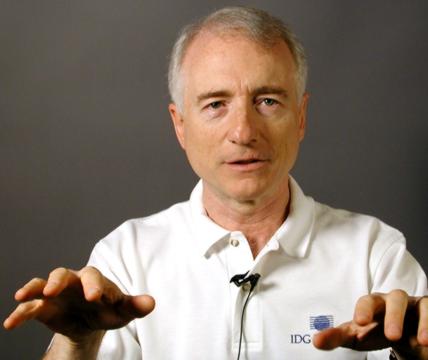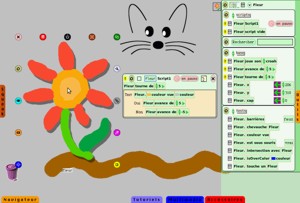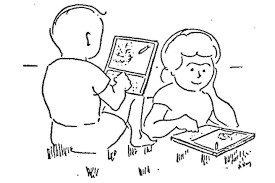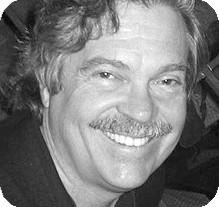| Alan Kay |
| Written by Historian | ||||||
Page 2 of 2
An Atari InterludeKay left Xerox Parc after Adele Goldberg and others went off to form Parc Place Systems and promote the Smalltalk language. Kay saw this as an abandonment of the search for the holy grail - the Dynabook. While they went off down an unimportant side road he would carry on searching for the really important things in life. He moved to Atari where he worked on "fantasy amplifiers". This was Kay's catchy term for what we might call a multimedia machine. Of course the hardware needed for such a machine was well beyond what Atari could afford to build and, more importantly, sell at a reasonable price. Kay was already benefiting from the guru like status that the work at Parc bestowed upon him. His mastery of the sales pitch made him tell the Atari management that they "were in the fantasy amplification business". Apple Enters the StoryIn 1979 Apple had already started work on the Lisa project - a graphics oriented desktop machine. It had graphics routines but no really integrated vision of what the product should be. Steve Jobs had heard about the work going on at Xerox Parc from Jeff Raskin who had contact with them while working at the Stanford A I project. Jobs offered Xerox the opportunity to invest in Apple if they gave him access to the bag of goodies that Parc was imagined to be. Xerox took 100,000 shares at $10 apiece, promised not to buy more than 5% of the company and invited Jobs to come and see Parc. Larry Tesler, who created the Smalltalk programming environment with Adele Goldberg, showed off the Alto and its iconic interface to a small group from Apple. The Parc people weren't looking forward to the demo - imagining that the Apple people would be drop-out uneducated hackers who knew nothing about computer science. As it turned out they were impressed by the quality of questions that were asked. Steve Jobs was overcome, wandering about the room shouting "Why aren't you doing anything with this? This is revolutionary!". By the end of the demo Tesler had decided to leave Parc and work for Apple.
Larry Tesler, born 1945
The story of how the Lisa and the Mac were built is one that really doesn't involve Alan Kay but the fact that they were built and, in the case of the Mac, were successful are important events in his career. Without them his ideas would be virtually unknown and his reputation would have stayed in the computer science lab. In 1984 Kay joined Apple, after Steve Jobs had spent some time trying to persuade him to do just that. Kay saw Apple as a worthless hardware company cashing in on the $100 million or so of research that had been done at Xerox Parc. He wasn't keen but the job at Atari, presumably another worthless hardware company, wasn't looking so secure as they started to run into cash problems. Kay joined Apple well after the time that the Lisa and Mac were being rolled out and thus he made no contribution to them. He seems to have spent most of his time wandering around telling everyone "Oh, yeah we did that at Xerox back in '76" - not an attitude that endeared him to the Apple team. Indeed the Parc brand of academic arrogance caused him to write a memo criticising the Mac that alienated Steve Jobs as well - "Have I got a deal for you: A Honda with a one-quart gas tank". Kay obviously thought that the hardware was so underpowered that it couldn't be used for real tasks. Kay wasn't the only ex-Parc person to be so affected. When ex-Parc employees applied for a job at Apple they often left in disgust when they discovered that the Mac didn't even have 2MBytes of RAM. Kay was immediately forbidden to speak to the press! As things turned out Kay ended up being one of the strongest advocates of the Apple way of doing things. In 1987 he and Steve Wozniak made a round the world publicity trip and spoke to Apple enthusiasts in an effort to put the ailing company back on its feet. His way with words seems to have impressed everyone who worked with him. He could verbalise what it was that was required so that others could work out how to achieve it. Alan Kay remained with Apple as a research fellow until the closing of its Advanced Technology Group in 1997. His work there suggests that his thinking underwent a paradigm shift towards the 'agent' approach to computing. The basic idea of an agent is a good one - an object that you can give a task to - but difficult to implement well. His early experiments in this field were with tanks of simulated fish and school children - his child centred approach to computing clearly hadn't changed! Child-Centered ResearchIt was while at Apple that Kay's research team developed Squeak, an open-source SmallTalk language. Then in 1997 Kay moved his team to Walt Disney Imagineering, Disney’s design and development arm to continue his work on this language for children and stayed there until the Disney Fellow Progam ended. In 2001 Kay founded the Viewpoints Research Institute, a non-profit organization dedicated to children, learning, and advanced software development. Viewpoints Research states it mission as: We want to start with the teaching and learning of old and new "powerful ideas"; create much better human-computer environments that allow for authoring, sharing and representing the new ideas; create new user-interfaces that can help children and adults "learn and do" the new ideas; and, invent new, fundamental computing technologies to serve as the raw material for the next stage of the computer revolution. We build everything we invent and we engineer our prototypes for the greatest usability.
Squeak, which influenced Scratch, is a child-friendly computer environment for use in education which was used by the One Laptop Per Child project, on its XO-1 educational machine. In 2009, the Squeakland Foundation was created by Viewpoints Research as an initial step in launching the foundation to continue encouraging development and use of Etoys as an educational medium. Awards Recognize VisionIn 1994 Kay was elected to the American Academy of Arts and Sciences. In1999 he was made a Fellow of the Computer History Museum: For his fundamental contributions to personal computing and human-computer interface development. His biography in the museum's Hall of Fame refers to his visionary ideas: Kay is best known for the idea of personal computing, the concept of the laptop computer, and the inventions of the now ubiquitous overlapping-window interface and modern object-oriented programming. It also displays this cartoon of children using the proposed Dynabook from 1968:
In 2003 Kay was the recipient of the ACM Turing Award with the citation: For pioneering many of the ideas at the root of contemporary object-oriented programming languages, leading the team that developed Smalltalk, and for fundamental contributions to personal computing. The following year he was awarded the Kyoto Prize in 2004 for: "Creation of the concept of modern personal computing and outstanding contribution to its realization"
|
||||||
| Last Updated ( Monday, 17 August 2015 ) |





